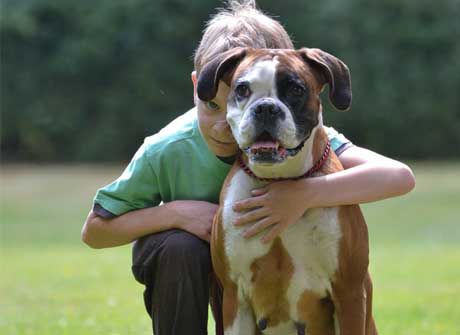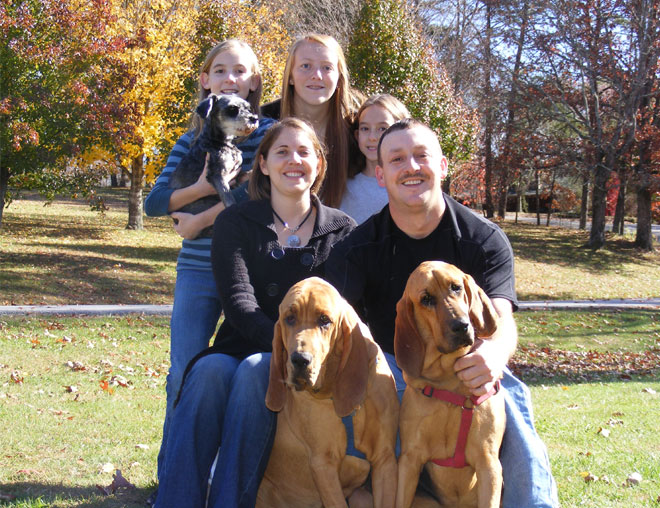Privacy Policy: Your email address is 100% safe.
We don't spam and hate it as much as you do 🙂 You can also unsubscribe from our mailing list at any time.

Aggression in Boxers

There are certain breeds of dogs that tend to be more aggressive than others. We all have heard stories of pit bulls, chow-chows, and boxers that show aggressive behavior, growling, snarling, and even biting people and other animals. Signs of hostility in a dog include bared teeth, flattened ears, erect tail, stiff legs, and bristling back hair; the dog may growl or bark.
If you see these behaviors, you should keep your arms at your sides and slowly back away, while firmly saying “No.”
Why do certain breeds tend to be aggressive? Let’s look at Boxers as one breed that can behave aggressively under certain circumstances.
Why Do Boxers Tend To Be Aggressive?
Sometimes, Boxers are aggressive just because it is part of the breed’s specific instinctual behavior. It is not learned, but inbred over time.
Boxers also tend to become aggressive when they have not been socialized adequately as puppies. A lack of exposure to “the world,” including other animals and people causes boxers to fear the unknown. They show aggression toward other animals and people because they are unsure and afraid.
Boxers are strong-willed dogs; they have minds of their own and they don’t hesitate to act on their own. Boxers need confident owners who can take charge of the animal, train properly, and maintain control at all times. Be aware that sometimes aggression can be caused by thyroid problems.
Always have your dog checked by a vet when it shows aggression to rule out medical problems.
Understanding Your Boxer
Many Boxers have protective instincts toward their owners when strangers are near. They need extensive exposure to friendly people so they learn to recognize the normal, non-threatening behavior of family members, friends, and neighbors. Then they are able to recognize the differences when someone acts threatening.
Without extensive socialization from an early age, they are suspicious of everyone, which can lead to biting, snarling, growling, and aggressiveness or are so fearful of being harmed that they become aggressive in their own defense.
Many Boxers are dominant or aggressive toward other dogs, especially those of the same sex. Some have strong instincts to chase and kill cats and other animals. If anything goes wrong in the breeding, socializing, training, or care of this breed, it is capable of injuring or killing other animals.
If a Boxer puppy is removed from its mother before seven weeks of age, it will not learn canine social signals such as bite inhibition, which are taught by the mother dog and siblings during this time. The puppy will be “mouthy” and nip, resist being handled, and act aggressively and fearfully toward other animals.
Conversely, if a puppy lives with its mother or siblings for more than 12 weeks, his position in the “pecking order” may be so ingrained that he will always act dominant (if he was at the top) or submissive (if he was at the bottom) toward people or other dogs.
How To Control Aggressive Boxers?
The best way to begin socializing your Boxer is to bring him home at seven or eight weeks of age and get him out into the world daily. Yes, daily is what it takes to establish a strong bond with your dog so that he will trust, respect, and obey you. This is “socializing” your dog, i.e.; getting him used to people, other dogs, other animals, and the world. This has an incredible impact on your dog’s behavior as he grows into adulthood.
It’s also crucial to socialize your adolescent dog, between the ages of six and nine months old to three years old. This is a difficult time of life for dogs; they are changing physically and learning constantly. They must be taught how to behave around people and other animals.
Continuing to socialize your Boxer during adulthood will not change the attitudes your dog has developed as a puppy, but can help to control his behavior so that he doesn’t act afraid or aggressive.
Socializing begins early and continues throughout your Boxer’s life. Take him for rides in the car. Take him to pet stores and other stores that allow dogs. Expose him to other animals at dog parks and as you take walks. Visit friends with him and have friends come to your home. Teach the dog to greet visitors. Use praise, praise, praise and affection constantly to encourage good behavior. Build a strong relationship with your Boxer; you are the leader and as the leader you must be calm, strong, loving, and consistent.
Touching has a powerful emotional effect on many dogs. It is part of the bonding process between the owner and the dog. Your dog must be willing to accept touching so that you can groom him, care for injuries, and put leashes and collars on him. Also, touch will help develop a strong, loving relationship between you, leading to his desire to please you. A daily “touch” session of five minutes or so is invaluable.
Training Boxers
Most puppies are ready to begin obedience lessons at six to eight months of age. The first lessons should be brief, 10 to 15 minutes a day (in addition to socialization activities), and gradually increase to 30 minutes. Training works best with lots of praise and a stern “no” for corrections.
The trainer should always be consistent in reinforcing good behavior and correcting bad behavior and should never strike a dog. Many trainers use a leash and chain-link collar, known as a choke collar. In spite of its name, the collar is never meant to choke a dog, but is used to deliver quick snaps to gain a dog’s attention. This training collar is useful in teaching basic obedience commands, such as sit, stay, heel, come, and down.
You must establish yourself as the leader of the dog’s pack. If you don’t, you will never have your dog under control. You must be strong, calm, firm, and respectful of the dog. Your behavior will determine whether your dog will obey you and respect you. The well-trained dog isn’t ultimately trained by treats, collars, or demands; he is trained by his love and respect for you.
Conclusion
In training Boxers to be non-aggressive, the owner must commit to daily socialization and training sessions for the duration of the dog’s life. The respectful and loving relationship between the Boxer and the owner is the most important factor in the Boxer’s acceptance of and non-aggression toward people and other animals. The owner must be the pack leader – firm, loving, consistent, and in control at all times.
Learn more about Boxers.
Train Your Dog To Listen To You
Sign up for our Free Dog Mini Course to have a housebroken, obedient dog that happily comes to you every time you call.
You'll learn new commands to obedience-train your dog as well as how to housebreak your dog in 6 days or less.
You'll also learn how to eliminate bad habits like barking, nipping or biting, jumping, or pulling on the leash.


